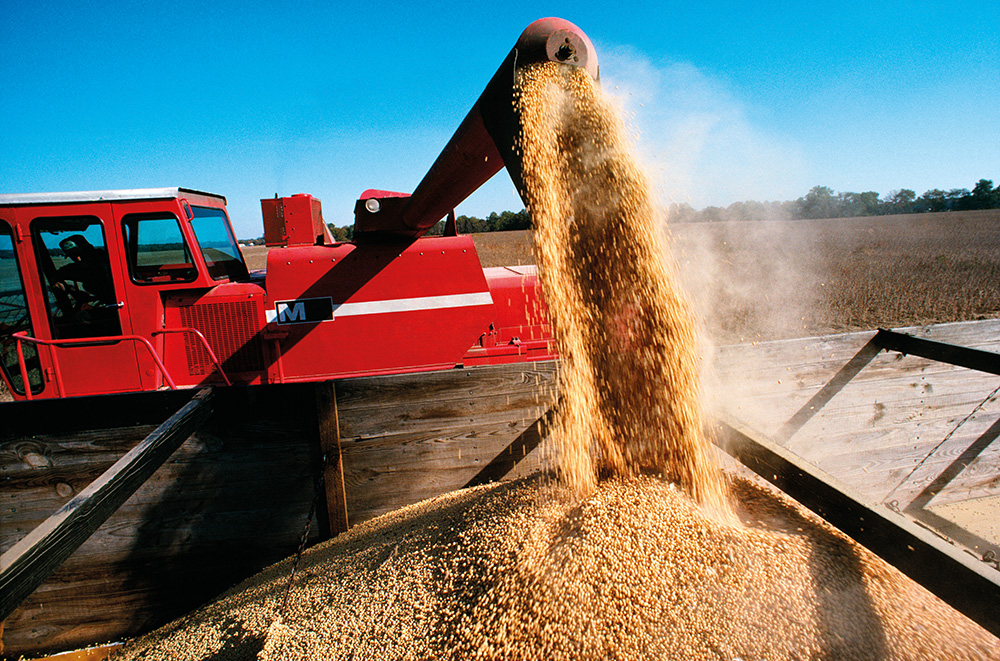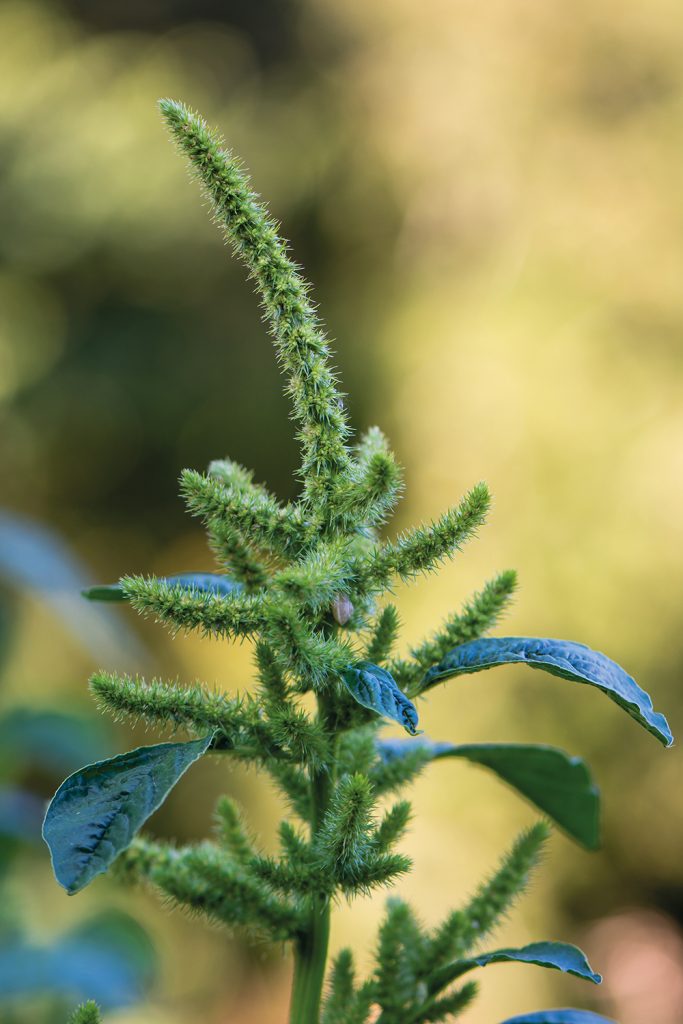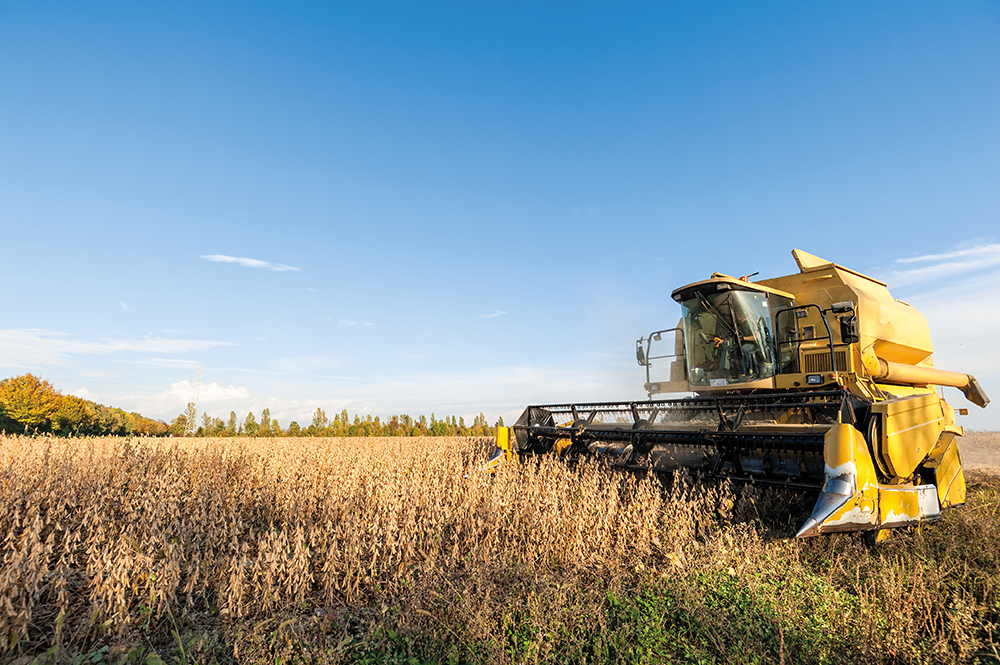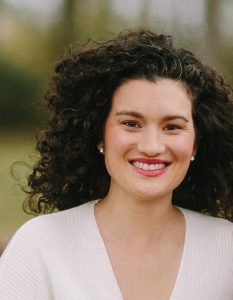Dr Lauren Lazaro – Weeding out Herbicide Resistance
Weeds that are resistant to herbicides pose an ever-growing danger to our major crops, threatening global food security. Dr Lauren Lazaro and her colleagues at Louisiana State University AgCenter are testing new, herbicide-free techniques to control the spread of these threats.
Advances in Agriculture
Few professions have been so transformed by the development of new technology as farming. Farming was once the main focus of almost every human on Earth; today, advances in plant breeding and mechanised techniques now mean that less than 5% of the population can feed everyone. High-yielding plants, efficient machines, and targeted herbicides have brought bumper crops to fields across the world.
However, there is a problem steadily growing in those fields, one that cannot be easily solved. That problem is herbicide resistance – the ability of weeds to survive chemical doses that would quickly kill most plants. A single mutant plant with resistance to herbicides will find its competitors killed off, allowing it free room to grow and multiply.
This problem is exacerbated by the current method of harvesting grain crops, using the mechanised combine harvester. Combines are versatile machines, which can cut and gather the crop, loosen the grain, and then remove the unwanted chaff – all within a single pass. A farmer can simply drive a combine harvester down a row in the field, leaving with a hopper full of edible grains and nothing more.
Many herbicide-resistant weeds tend to be mature at the same time as the surrounding crops, and are thus taken up by the machine during harvesting. The mature seeds are sorted out with the other chaff, and are then expelled out the back of the combine harvester with the other, non-crop waste. This disperses the seeds over a wide area, spreading them out perfectly in preparation for the next year’s growing season.

The Soil Seedbank
Any field contains a number of plant seeds, most of which are in place and ready to grow well before any crops are planted. For this reason, the earth is often referred to as a ‘soil seedbank’, a mixture of wanted and unwanted species. Maintaining this seedbank can be challenging, particularly as some weeds can persist for years. The morningglory weed species, for example, has been shown to persist for almost 40 years after the initial contamination. This means that farmers need to focus on the long-term health of their fields – a process that requires excellent knowledge of local conditions and weeds.
Part of this involves reducing the weeds at the source, by preventing them from entering the soil in the first place. ‘Reducing the number of weed seeds that go back into the soil seedbank is very important,’ says Dr Lauren Lazaro of the Louisiana State University AgCenter ‘as this helps to eliminate future weed problems.’
Palmer Amaranth
One of Dr Lazaro’s main focuses is the weed known as Palmer amaranth, a member of the Amaranthaceae family. This species has many features that make it the ‘ideal weed’ – it is adaptable and fast growing, plants emerge from the soil at different times, and it has evolved multiple different herbicide-resistance pathways. Palmer amaranth is considered a major threat to soybean and cotton producers in the US, with major economic impact.
This importance was clearly demonstrated by Dr Lazaro and her colleagues, who surveyed the opinions of many major soybean consultants and growers in the US. They wished to learn more about the many decisions that farmers make when choosing the strain of crop to plant and how to control weeds.
Their study found that the majority of growers planted soybeans with genetic resistance to one of the major herbicides, such as glyphosate or glufosinate. Although glufosinate was effective at killing Palmer amaranth, the team noted that there was growing concern amongst farmers about the steadily-increasing amounts of herbicide-resistant weeds. Controlling these herbicide-resistant plants, particularly Palmer amaranth, required additional money and time to be spent, cutting into farmer’s profits.

Harvest Weed Seed Control
Clearly, the simple application of herbicides is not sufficient to control the soil seedbank quality. One potential solution to this problem is known as Harvest Weed Seed Control, or HWSC for short. This area is where Dr Lazaro and her colleagues are currently devoting her time.
Despite the complex name, the idea of HWSC is relatively simple. ‘HWSC is simply an alternative, non-chemical, weed management tactic that targets weed seeds at harvest,’ explains Dr Lazaro. ‘It is an additional integrated weed management tool and should be used with other IWM tactics.’
HWSC involves a number of different strategies, all of which aim to destroy weed seeds present during harvest. Research has predominantly focused on three main approaches (out of six approaches in total), namely narrow windrow burning, chaff lining/tramlining, and mechanical seed destruction.
Narrow windrow burning adds a funnel behind the harvester, which takes the straw and chaff (containing weed seeds) and focuses it into a narrow, long pile known as a windrow. All of the weeds, including their seeds, are thus concentrated in one spot. The windrow is then burned, carefully, to kill all of the seeds. This approach works well, but is not appropriate for some crops, and it also prevents farmers from grazing their sheep or cattle in the field after harvesting.
Chaff lining involves funnelling the chaff into a neat row (a chaff line) directly behind the harvester through a narrow chute. This chaff line is then left to rot, which destroys the weed seeds within. A similar approach is chaff tramlining, but in this case the chaff is diverted onto permanent farm tramlines. Traffic on these tramlines creates a hostile environment that prevents the seeds from germinating.

Mechanical seed destruction is a third option, which avoids many of these difficulties. It is generally performed using the gloriously-named Integrated Harrington Seed Destructor (or iHSD). This mechanism intercepts the chaff in a combine harvester, pulverises it in a high-speed mill, and then passes that powder on to the field. This allows farmers to harvest their crops as usual, with the knowledge that unwanted weed seeds are destroyed prior to being distributed.
Despite the many apparent advantages to HWSC, it has not truly caught on in the US, indeed many of the innovative approaches have been pioneered in other countries. Australia in particular has been leading the way in implementing many of these techniques, with commercial farmers regularly using all three HWSC methods in their fields. Beyond this, the Harrington Seed Destructor was developed and commercialised by an Australian farmer and inventor, with many of the development steps supported by government funding.
‘Because HWSC is not heavily used in US agriculture,’ says Dr Lazaro, ‘there is still a lot of information that is unknown on how this weed management tactic affects the soil seedbank in our cropping systems.’
In order to fill this gap, Dr Lazaro and her colleagues examined the use of an iHSD on weeds that are common in soybean and rice fields in the US. They were able to show that the iHSD could kill more than 99% of seeds from 11 of the 12 major soybean weeds. The twelfth weed, common cocklebur, is a heavy yet low-density seed that helps it to traverse the iHSD; but even in the case of the cocklebur, 97% of the seeds were destroyed.
Dr Lazaro’s work also demonstrated that the device is effective against high and low levels of chaff flow. Based on these results, they were able to recommend the device for soy and rice crop fields – areas where it had not yet been used commercially.

Timing the Harvest
Not all weed species are ideal for control by HWSC. Palmer amaranth is a species in which the seeds tend to remain on the plant up to and after normal soybean harvesting time. Dr Lazaro and her colleagues were able to show that the plants retained 98% of their seeds at the time of soybean maturity, while 95% remained a month later. In other words, any Palmer amaranth plants that were growing in the field during harvest would have an almost complete seed-load – this would then be spread out the back of the combine harvester to contaminate the soil seedbank. In this case, HWSC and seed destruction (by the iHSD, for example) are extremely valuable, as they prevent this spread of unwanted seeds.
The approach is far less useful for other species. Barnyardgrass, for example, retains only 40% of its seeds at the time of soybean maturity, and only 30% a month later. Thus, the majority of seeds from this weed are already released and in the soil. Destroying the remainder during harvesting is far less useful than for a species such as amaranth.
Dr Lazaro’s work also confirms the importance of the harvest date. Crops that are harvested later than usual tend to have higher numbers of weeds in the soil seedbank, as the seeds have more time to release. This makes late harvesting even more dangerous for farmers – not only do they have additional costs before they can sell their crops, but they risk the long-term health of their fields as well.
Future Crops and Weeds
Research by Dr Lazaro and her colleagues has revealed the advantages and challenges of HWSC, with their evidence being overwhelmingly positive for the use of these methods in the US, particularly as it relates to the long-term health of crop fields. The team hopes that their results will encourage uptake of HWSC by farmers across the continent, and perhaps, to the eventual control of economically devastating weeds such as Palmer amaranth.
Reference
https://doi.org/10.33548/SCIENTIA390
Meet the researcher

Dr Lauren M. Lazaro
School of Plant, Environmental, and Soil Sciences
Louisiana State University AgCenter
Baton Rouge, LA
USA
Dr Lauren Lazaro began her research career at Southern Illinois University, where her PhD focused on the population dynamics of closely related species. Upon graduating, she worked as a postdoctoral research associate in weed science at the University of Arkansas. Since 2017, Dr Lazaro has been an Assistant Professor of Weed Science and Agronomy in the School of Plant, Environmental and Soil Sciences at Louisiana State University AgCenter, where she splits her time between research and teaching. Her team studies weed biology/ecology, integrated weed management, herbicide resistance, and harvest weed seed control. Her current research focuses on the long-term management of reducing the soil seedbank and how various management tactics can affect weed species. As an educator, Dr Lazaro teaches Weed Science and the Environment, Introduction to Crop Science, and Field Plot Techniques, as well as taking the lead in developing several new curricula in the area of crop science and field-based research at Louisiana State University.
CONTACT
W: https://www.lsuagcenter.com/profiles/LLazaro
KEY COLLABORATORS
Daniel Stephenson, Louisiana State University AgCenter
Josh Copes, Louisiana State University AgCenter
Donnie Miller, Louisiana State University AgCenter
Jason Norsworthy, University of Arkansas
Steven Mirsky, USDA-ARS
Muthukumar Bagavathiannan, Texas A&M
Karla Gage, Southern Illinois University
Bryan Young, Purdue University
FUNDING
USDA – Agricultural Research Service
USDA Hatch
United Soybean Board
Louisiana Soybean and Grain Research Board
FURTHER READING
LM Schwartz-Lazaro, JT Copes, A Review of the Soil Seedbank from a Weed Scientists Perspective, Agronomy, 2019, 9, 369.
LM Schwartz-Lazaro, JK Green, and JK Norsworthy, Seed Retention of Palmer amaranth (Amaranthus palmeri) and Barnyardgrass (Echinochloa crus-galli) in Soybean, Weed Technology, 2017, 31, 617–622.
LM Schwartz-Lazaro, JK Norsworthy, LE Steckel, DO Stephenson, MD Bish, KW Bradley, JA Bond, A Midsouthern Consultant’s Survey on Weed Management Practices in Soybean, Weed Technology, 2018, 32, 116–125.
LM Schwartz-Lazaro, JK Norsworthy, MJ Walsh, and MV Bagavathiannan, Efficacy of the Integrated Harrington Seed Destructor on Weeds of Soybean and Rice Production Systems in the Southern United States, Crop Science, 2017, 57, 2812–2818.
MJ Walsh, JC Broster, L Schwartz-Lazaro, JK Norsworthy, AS Davis, BD Tidemann, HJ Beckie, DJ Lyon, N Soni, P Nevej and MV Bagavathiannank, Opportunities and challenges for harvest weed seed control in global cropping systems, Pest Management Science, 2018, 74, 2235–2245.

Creative Commons Licence
(CC BY 4.0)
This work is licensed under a Creative Commons Attribution 4.0 International License. 
What does this mean?
Share: You can copy and redistribute the material in any medium or format
Adapt: You can change, and build upon the material for any purpose, even commercially.
Credit: You must give appropriate credit, provide a link to the license, and indicate if changes were made.
More articles you may like
Grandmothers: Innovation Through Tradition
Grandmother Project – Change through Culture (GMP) is an organisation dedicated to documenting the role of grandmothers and demonstrating the effectiveness of grandmother-inclusive strategies in improving the health and well-being of women, children, and adolescents. GMP’s groundbreaking work challenges conventional wisdom to transform community-based interventions in Africa and beyond, harnessing a powerful but often overlooked resource: the wisdom and influence of grandmothers.
Dr Robert Larkin | Cultivating Change to Improve Soil Health and Increase Potato Yield
Environmental quality and food production are facing the pressing challenges of climate change and global population growth. Dr Robert Larkin from the United States Department of Agriculture-Agricultural Research Service (USDA-ARS) and a team of plant scientists developed and tested a range of crop management systems to help overcome these compounding challenges. Their work is improving soil health and increasing the yield of potato crops, contributing to the future food security of nations.
Professor Giorgio Buttazzo | Artificial Intelligence and a Crossroads for Humanity
Where do we stand with artificial intelligence? Might machines take over our jobs? Can machines become conscious? Might we be harmed by robots? What is the future of humanity? Professor Giorgio Buttazzo of Scuola Superiore Sant’Anna is an expert in artificial intelligence and neural networks. In a recent publication, he provides considered insights into some of the most pressing questions surrounding artificial intelligence and humanity.
Dr Ralf Adam | New Technologies Shaping the Future of Oral Hygiene
Understanding the efficiency of various toothbrush technologies is essential for achieving optimal oral health. Dr Ralf Adam, who leads a dedicated team at Procter & Gamble in Germany, is keen to investigate the complexities of these technologies. His team have provided new insights into the best toothbrush types for plaque removal and the maintenance of gum health. By highlighting the importance of informed oral care decisions and ongoing investigations, this vital research works towards ensuring everyone can achieve a brighter, healthier smile.




